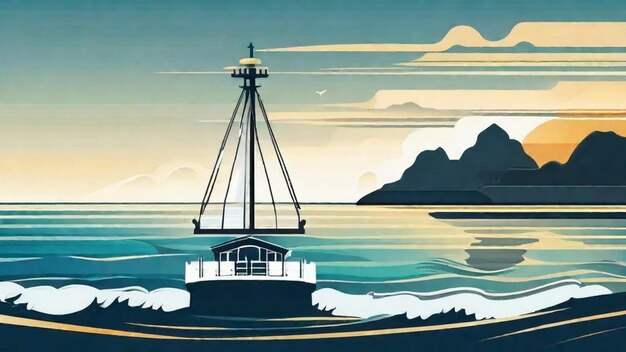Unlocking The Mysteries Of Whidbey Clams Through Citizen Science

Table of Contents
The Importance of Whidbey Clam Research
Whidbey clams, a vital part of the Puget Sound ecosystem, hold significant ecological, economic, and cultural value. Ecologically, they filter water, improving water quality and supporting other marine life. Economically, they are a crucial part of the local shellfish industry, providing livelihoods and contributing to the regional economy. Culturally, they are a treasured resource for many Indigenous communities and have a long history in the region's culinary traditions.
However, Whidbey clam populations are facing numerous threats. Pollution from agricultural runoff and urban development degrades their habitat. Habitat loss from coastal development further shrinks their living space. Overharvesting, if not carefully managed, can deplete populations rapidly. Climate change, with its rising sea levels and changing water temperatures, poses another significant threat.
Traditional scientific approaches, while valuable, often have limitations. Research can be expensive, time-consuming, and geographically restricted. This is where citizen science steps in, offering a powerful solution.
- Increased data collection across wider geographic areas: Citizen scientists can monitor clams across a vast area, providing a more comprehensive picture of their population health.
- Cost-effective monitoring efforts: Utilizing volunteers significantly reduces the financial burden of research.
- Greater public engagement and awareness: Citizen science initiatives raise public awareness about clam conservation and foster a sense of stewardship.
How Citizen Scientists Contribute to Whidbey Clam Research
Citizen scientists contribute to Whidbey clam research in various ways, participating in diverse projects:
- Clam surveys: Volunteers systematically survey beaches to count and assess the size and health of clam populations. This provides critical data on population trends.
- Beach cleanups: Removing debris and pollutants from beaches directly improves clam habitat and reduces threats to their survival. This is a crucial part of Whidbey clam conservation.
- Water quality monitoring: Citizen scientists can collect water samples to assess water quality parameters like salinity, temperature, and pollution levels, providing essential context for understanding clam health.
One example is the "Adopt-a-Beach" program, where volunteers regularly monitor a designated stretch of beach, recording clam numbers, shell size, and any signs of disease or pollution. This data is then relayed to researchers at the local university, who use it to track population trends and identify areas needing attention.
Participating in these projects doesn't require specialized expertise. Most initiatives provide thorough training on data collection methods and identification of key clam characteristics.
- Participating in organized clam surveys: Requires training on identification and counting methods.
- Reporting sightings of sick or dead clams: Helps identify potential disease outbreaks or environmental issues.
- Collecting water samples for analysis: Involves learning proper sampling techniques and handling procedures.
- Data entry and analysis (depending on the project): Some projects involve assisting with data entry and basic analysis, adding another layer of contribution.
The Impact of Citizen Science on Whidbey Clam Conservation
Citizen science initiatives have already yielded significant results in Whidbey clam conservation. For example, data collected by volunteers helped identify a previously unknown pollution source affecting a specific clam bed, leading to successful remediation efforts. In another instance, citizen scientists' observations of unusually high clam mortality prompted further investigation, ultimately revealing a connection to a harmful algal bloom.
Data from citizen science projects directly informs management decisions. For instance, population trends identified by volunteers can inform harvesting quotas, ensuring sustainable practices. Findings on pollution sources can lead to targeted environmental clean-up efforts.
- Improved understanding of clam population dynamics: Provides crucial data on population size, distribution, and trends.
- Identification of key threats to clam populations: Helps pinpoint pollution sources, habitat loss, and other threats.
- Development of effective conservation strategies: Informs the development of targeted conservation plans.
- Increased funding for clam conservation efforts: Successful citizen science projects often demonstrate the need for increased conservation funding.
Working with Scientists and Organizations
Several organizations are actively involved in Whidbey clam research and citizen science initiatives. These include local environmental groups like the Whidbey Camano Land Trust, university research programs at the University of Washington, and government agencies such as the Washington Department of Fish and Wildlife.
Citizen scientists interact directly with these organizations, receiving training, providing data, and participating in collaborative research efforts. To find and join a project, explore the websites of these organizations or search online for "Whidbey clam citizen science."
- Local environmental groups: Offer various volunteer opportunities related to clam conservation.
- University research programs: May recruit citizen scientists for specific research projects.
- Government agencies: Often coordinate large-scale monitoring programs involving citizen scientists.
Conclusion
Citizen science is proving to be an invaluable tool in unlocking the mysteries surrounding Whidbey clams and ensuring their long-term survival. By actively participating in research and monitoring efforts, citizen scientists are making a tangible difference in the conservation of this important species. Become a citizen scientist and contribute to the conservation of Whidbey clams! Learn more about ongoing projects and how you can get involved in protecting these fascinating shellfish. Join the effort to understand and conserve Whidbey clams today!

Featured Posts
-
 Enhanced Emergency Care Advanced Paramedics Arrive In Rural And Northern Manitoba
May 30, 2025
Enhanced Emergency Care Advanced Paramedics Arrive In Rural And Northern Manitoba
May 30, 2025 -
 Us Slaps Record High Tariffs On Southeast Asian Solar Panels Up To 3 521
May 30, 2025
Us Slaps Record High Tariffs On Southeast Asian Solar Panels Up To 3 521
May 30, 2025 -
 Le Jugement De Marine Le Pen 5 Ans D Ineligibilite Analyse Et Consequences
May 30, 2025
Le Jugement De Marine Le Pen 5 Ans D Ineligibilite Analyse Et Consequences
May 30, 2025 -
 Mangel Pa Respekt Stjerne Langer Ud Efter Dansk Boss
May 30, 2025
Mangel Pa Respekt Stjerne Langer Ud Efter Dansk Boss
May 30, 2025 -
 Steffi Graf Und Andre Agassi Enthuellen Ihre Pickleball Formel
May 30, 2025
Steffi Graf Und Andre Agassi Enthuellen Ihre Pickleball Formel
May 30, 2025
Latest Posts
-
 Miley Cyrus End Of The World Music Video A New Visual Experience
May 31, 2025
Miley Cyrus End Of The World Music Video A New Visual Experience
May 31, 2025 -
 Analisa Singel Baru Miley Cyrus End Of The World
May 31, 2025
Analisa Singel Baru Miley Cyrus End Of The World
May 31, 2025 -
 End Of The World Miley Cyrus Tanggal Rilis Dan Prediksi Kesuksesan
May 31, 2025
End Of The World Miley Cyrus Tanggal Rilis Dan Prediksi Kesuksesan
May 31, 2025 -
 Miley Cyrus En Bruno Mars Plagiaatzaak Rond Hit Muziekstuk Wordt Voortgezet
May 31, 2025
Miley Cyrus En Bruno Mars Plagiaatzaak Rond Hit Muziekstuk Wordt Voortgezet
May 31, 2025 -
 Rechtszaak Miley Cyrus Aanklacht Wegens Plagieren Van Bruno Mars Hit
May 31, 2025
Rechtszaak Miley Cyrus Aanklacht Wegens Plagieren Van Bruno Mars Hit
May 31, 2025
